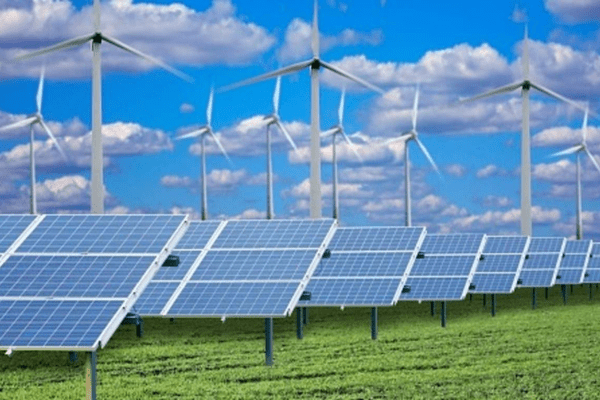India’s renewable energy sector has witnessed significant growth, with the country adding a record capacity in 2023-24.
Key highlights from latest data of the Ministry of New & Renewable Energy:
Record Renewable Energy Capacity Addition:
- India added a record renewable energy capacity of 18.48 GW in 2023-24, marking a remarkable increase of over 21% from the previous year.
- Solar installations accounted for the majority of the capacity addition, totaling 12.78 GW, followed by wind energy at 2.27 GW.
Current Installed Capacity and Targets:
- Currently, India’s installed renewable energy capacity stands at 143.64 GW, excluding large hydropower capacity (each plant is more than 25 GW or above).
- Including large hydro projects, the total renewable energy capacity reaches around 190 GW.
- To achieve the target of 500 GW of renewable energy by 2030, India needs to add approximately 310 GW in the next six years, averaging about 50 GW annually.
Renewable energy capacity distribution:
- India’s total solar installed capacity leads with 81.81 GW, followed by approximately 46 GW from wind energy.
- Biomass cogeneration contributes 9.43 GW, and small hydro projects (each with up to 25 MW capacity) add another 5 GW.
State-wise Distribution:
- Gujarat and Rajasthan lead in renewable energy capacities with approximately 27 GW each, followed by Tamil Nadu (22 GW), Karnataka (21 GW), and Maharashtra (17 GW).
- States like Himachal Pradesh and Andhra Pradesh have also made significant contributions, with installed capacities of about 11 GW each.
Renewable energy targets in India:
- India has set a target to reduce the carbon intensity of the nation’s economy by less than 45% by the end of the decade, achieve 50% cumulative electric power installed by 2030 from renewables, and achieve net-zero carbon emissions by 2070.
- India aims for 500 GW of renewable energy installed capacity by 2030.
- India aims to produce 5 Mn Tonnes of green hydrogen by 2030.
- This will be supported by 125 GW of renewable energy capacity.
Steps taken to promote Renewable Energy (RE):
- National Green Hydrogen Mission: Launched to establish India as a global hub for the production, utilization, and export of Green Hydrogen and its derivatives.
- Schemes: Includes the Production Linked Incentive Scheme for High Efficiency Solar PV Modules, Pradhan Mantri Kisan Urja Suraksha evam Utthaan Mahabhiyan (PM-KUSUM), Solar Rooftop Phase II, and the 12000 MW CPSU Scheme Phase II.
- Infrastructure Development: Initiatives to set up Ultra Mega Renewable Energy Parks, providing land and transmission facilities to RE developers for large-scale project installations.
- Policy Support: Enacted the Green Energy Open Access Rules 2022 to promote renewable energy adoption.
- Investment Opportunities: Allows 100% Foreign Direct Investment (FDI) under the automatic route in the renewable energy sector.
Challenges:
- Access to financing: Lack of institutions to deploy financing effectively in new low-carbon growth areas.
- Location-specific potential: Renewable energy is concentrated in areas sometimes away from consumers or the grid.
- Higher costs: The transition to renewables requires massive investments, which can burden poorer countries and affect their budgets for essential services.
- Energy storage: Solar PV & Wind turbines relies on environmental factors such as weather, seasons, and geographical locations and hence they require backup or storage solutions to provide stable power.
- Lack of infrastructure: Renewable energy sources require large amounts of land, and traditional energy sources like coal and oil have existing infrastructure.
Installed capacity for Renewables (accounting 41.4% Of India’s total energy mix):
- Renewable energy sources have a combined installed capacity of 150+ GW.
- As of Feb 2024, Renewable energy sources, including large hydropower, have a combined installed capacity of 183.49 GW.
- The following is the installed capacity for Renewables:
- Wind power: 45.15 GW
- Solar Power: 75.57 GW
- Biomass/Co-generation: 10.2 GW
- Small Hydro Power: 4.99 GW
- Waste To Energy: 0.58 GW
- Large Hydro: 46.92 GW
Ref:Source
| UPSC IAS Preparation Resources | |
| Current Affairs Analysis | Topperspedia |
| GS Shots | Simply Explained |
| Daily Flash Cards | Daily Quiz |


